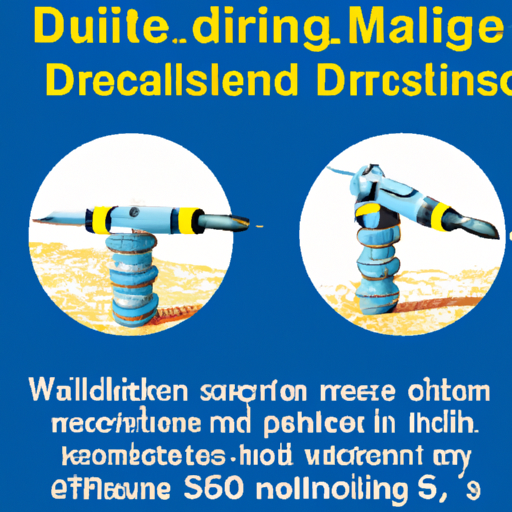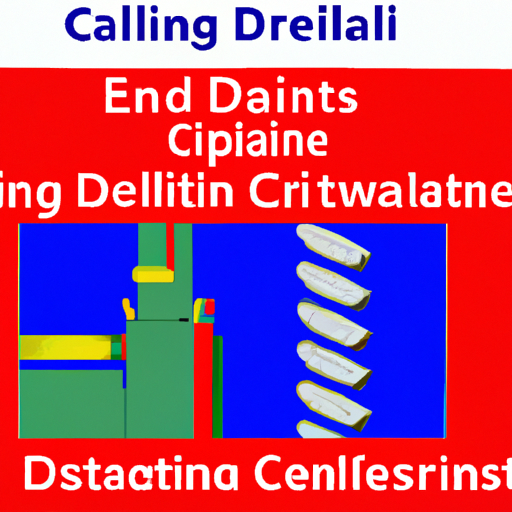Enhancing Drilling Operations with Non-Magnetic Drill Collars P550 and P530

Introduction (100 words):
Drilling operations in the oil and gas industry require specialized equipment to overcome various challenges. Non-magnetic drill collars, such as the P550 and P530 models, have revolutionized the efficiency and safety of drilling processes. In this article, we will explore the significance of these non-magnetic drill collars and how they contribute to enhanced drilling operations. We will delve into their features, benefits, and applications, shedding light on how they mitigate the risks associated with magnetic interference in drilling operations.
1. Understanding Non-Magnetic Drill Collars (200 words):
Drill collars are heavy-duty tubular components used to provide weight on the drill bit. They are typically made of steel, which possesses magnetic properties. However, certain drilling environments demand non-magnetic drill collars to prevent magnetic interference with sensitive downhole tools, such as measuring-while-drilling (MWD) and logging-while-drilling (LWD) equipment.
Non-magnetic drill collars, like the P550 and P530, are made from non-magnetic alloys, often stainless steel or titanium. These materials exhibit minimal magnetic permeability, enabling them to function effectively even in highly magnetized drilling environments. By eliminating magnetic interference, non-magnetic drill collars enhance the accuracy and reliability of downhole measurements, thus improving drilling efficiency.
2. Features of P550 and P530 Non-Magnetic Drill Collars (200 words):
P550 and P530 non-magnetic drill collars are specifically designed to withstand the demanding conditions encountered during drilling operations. These collars offer several features that make them highly suitable for various applications:
a) Material Composition: The P550 drill collar is manufactured from a nickel-alloy steel blend, while the P530 drill collar is composed of non-magnetic austenitic stainless steel. Both materials possess excellent non-magnetic properties, ensuring minimal interference with sensitive downhole equipment.
b) Strength and Durability: The P550 and P530 drill collars undergo rigorous heat treatment processes, resulting in superior strength and durability. This allows them to withstand high axial loads, torque, and bending stresses encountered during drilling operations.
c) Threaded Connections: Both drill collar models are equipped with premium threaded connections, ensuring secure and reliable attachment to the drill string. These connections are designed to prevent thread galling, enhancing the overall integrity of the drilling assembly.
d) Corrosion Resistance: Non-magnetic drill collars are resistant to corrosion, which is crucial for extended service life in harsh drilling environments. The P550 and P530 drill collars undergo specialized anti-corrosion treatments, protecting them from chemical and environmental degradation.

3. Benefits of Non-Magnetic Drill Collars (200 words):
The utilization of non-magnetic drill collars offers several significant benefits to drilling operations:
a) Improved Accuracy: By eliminating magnetic interference, non-magnetic drill collars enhance the accuracy of downhole measurements, such as inclination, azimuth, and formation evaluation. This enables operators to make informed decisions during drilling, optimizing well placement and reducing costly errors.
b) Enhanced Drilling Efficiency: Non-magnetic drill collars reduce the risk of tool failure or inaccuracies caused by magnetic interference. This translates into smoother drilling operations, minimizing downtime and maximizing drilling efficiency.
c) Safety and Reduced Operational Risks: Non-magnetic drill collars mitigate the risks associated with magnetic interference, such as false readings or equipment malfunction. This ensures a safer working environment for personnel and decreases the likelihood of accidents during drilling operations.
d) Compatibility with Magnetic Resonance Imaging (MRI): Non-magnetic drill collars are essential when drilling operations are conducted in areas where MRI technology is used for medical purposes. The non-magnetic properties of these collars prevent interference with medical equipment, avoiding potential harmful consequences.
4. Applications of P550 and P530 Non-Magnetic Drill Collars (200 words):
P550 and P530 non-magnetic drill collars find extensive applications in various drilling scenarios, including:
a) Directional and Horizontal Drilling: In directional drilling, non-magnetic drill collars are crucial to accurately navigate the wellbore, ensuring precise target zone penetration. These collars enable operators to achieve challenging well trajectories and maximize production potential.
b) Offshore Drilling: Offshore drilling environments often involve high magnetic interference due to the presence of subsea pipelines and equipment. Non-magnetic drill collars are essential in such scenarios, providing reliable downhole measurements without magnetic disturbances.
c) Magnetic Resonance Logging: When drilling in areas where Magnetic Resonance Logging (MRL) is employed, non-magnetic drill collars ensure accurate measurements without interfering with the MRL equipment. This is vital for assessing reservoir properties and optimizing well productivity.
d) Deepwater Drilling: Deepwater drilling operations demand high precision and reliability. Non-magnetic drill collars, such as the P550 and P530 models, guarantee accurate measurements and reduce operational risks, enabling efficient drilling in challenging deepwater environments.
Conclusion (100 words):
Non-magnetic drill collars, such as the P550 and P530 models, have become indispensable tools in the oil and gas industry. Their non-magnetic properties offer numerous advantages, including improved accuracy, enhanced drilling efficiency, increased safety, and compatibility with medical imaging technology. The P550 and P530 drill collars' strength, durability, and corrosion resistance make them highly suitable for a wide range of drilling applications, from directional drilling to deepwater operations. By incorporating these non-magnetic drill collars into drilling operations, companies can optimize performance, reduce costs, and ensure the safety of personnel and equipment.




 8613371530291
8613371530291